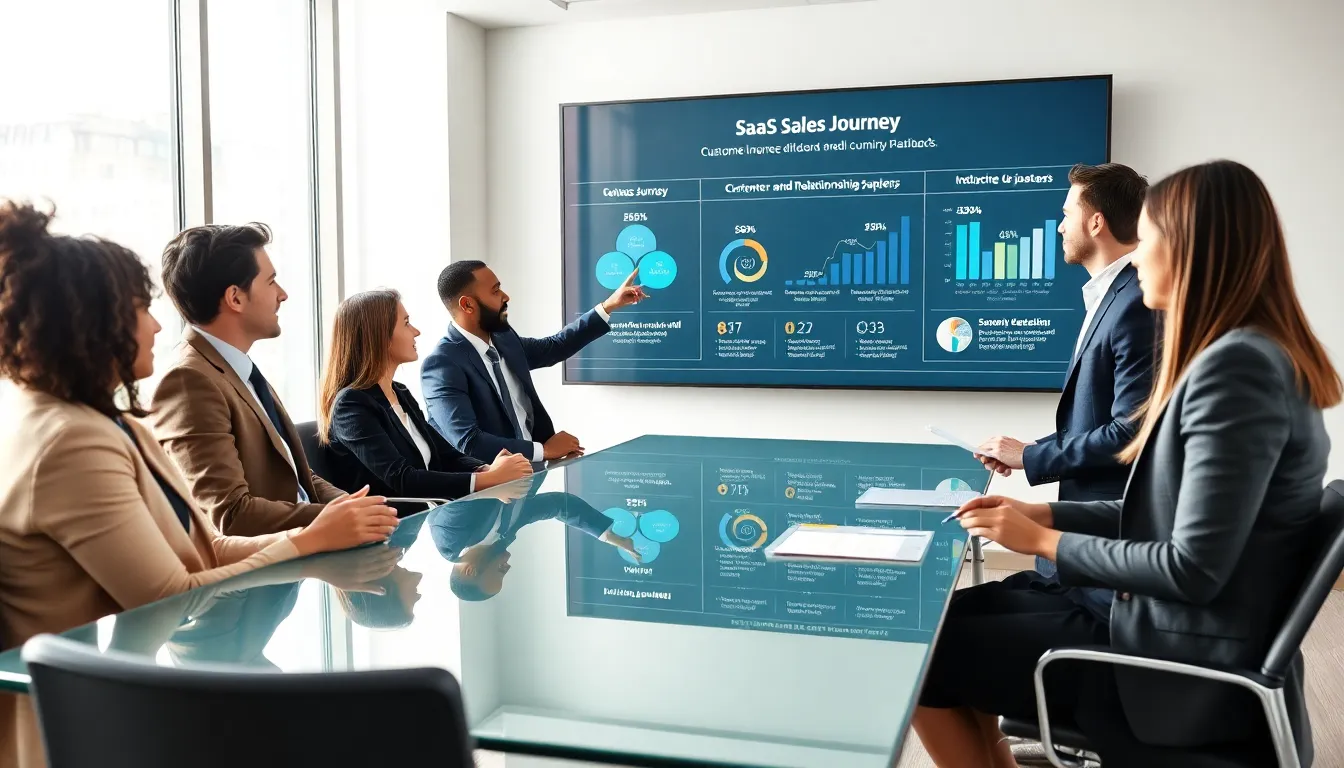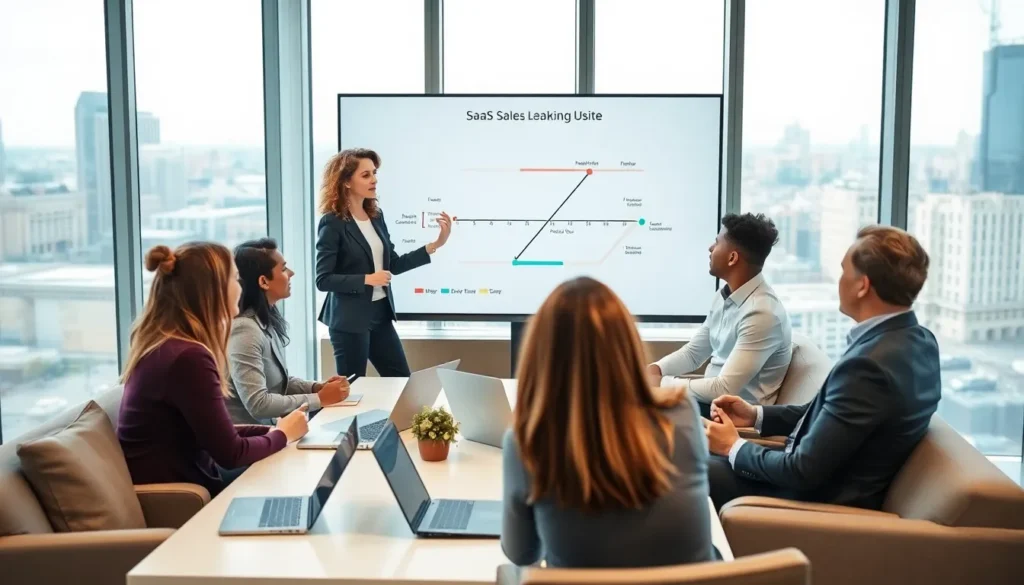Table of Contents
ToggleEver wondered why some Software as a Service (SaaS) companies soar while others barely skim the surface? The secret sauce lies in their sales process. Imagine trying to sell ice to Eskimos. Sounds crazy, right? But with the right approach, even the toughest sell becomes a piece of cake. In the SaaS world, understanding the sales process is non-negotiable. Strap in as we unravel the intricacies of the SaaS sales process and arm you with strategies to turn leads into loyal customers.
Understanding the SaaS Sales Model

The SaaS sales model operates on a unique subscription basis, allowing customers to access software over the internet without the hassle of installation. This flexibility appeals to many businesses looking to streamline operations while saving costs. In this model, the focus shifts from selling a one-time license to nurturing long-term relationships.
Traditional sales tactics often fall flat in this landscape. A successful SaaS sales professional thinks beyond mere transactions. They engage in conversations, understand client needs, and build trust. This model relies heavily on a smooth customer journey, where each step leads to another, contingent upon delivering value consistently. The emphasis is on recurring revenue and customer retention, making every aspect of the sales process critical.
Key Stages of the SaaS Sales Process
Navigating the SaaS sales process involves several crucial stages. Let’s break them down.
1. Prospecting and Lead Generation
The journey begins with prospecting, where the goal is to identify potential clients who would benefit from the product. This can involve various tactics such as cold outreach, inbound marketing strategies, and attending industry events. Using social media platforms and content marketing, sales professionals can draw in leads with targeted messages that speak to their pain points.
2. Qualification of Leads
Once leads are generated, the next step is qualification. Not every lead is worth pursuing. Professionals must differentiate between high-quality leads and those that aren’t a good fit. Here, sales teams employ criteria like budget, needs, and potential to convert. This step saves time and increases efficiency.
3. Product Demonstration and Evaluation
For modern SaaS products, showing instead of telling is essential. During product demonstrations, potential customers get hands-on experience, making it easier to visualize how the software can resolve their specific issues. A well-structured demo can significantly influence buying decisions.
4. Proposal and Negotiation
After a successful demo, it’s time to present pricing options. At this point, transparency is key. Clearly laying out terms and being open to negotiation can foster trust. Tailoring proposals to meet the customer’s needs demonstrates adaptability and commitment to their success.
5. Closing the Sale
The closing phase is where skill meets opportunity. Sales professionals must address objections, create urgency, and guide the customer gently but confidently towards making a decision. Effective closing techniques can turn hesitant leads into satisfied customers.
6. Onboarding and Customer Success
Closing a sale is just the beginning. A smooth onboarding process is essential for ensuring users have a positive experience. Effective onboarding leads to higher retention rates, encouraging customers to become advocates for the brand. Providing valuable resources and support during this phase bolsters customer success.
Optimizing Your SaaS Sales Strategy
To thrive in the competitive SaaS landscape, optimizing the sales strategy is paramount.
Leveraging Technology in the Sales Process
Technology plays a significant role in enhancing sales strategies. Utilizing Customer Relationship Management (CRM) systems allows teams to manage relationships efficiently and streamline communication. Automation tools can handle repetitive tasks, freeing up sales professionals to focus on building relationships and closing deals. Also, analytics tools offer insights into customer behaviors, making it easier to modify strategies based on real-time data.
Common Challenges in the SaaS Sales Process
Even though a solid strategy, challenges often arise during the SaaS sales process.
High competition, especially as new players enter the market, can make differentiation difficult. Also, rapidly changing customer needs mean that sales strategies must be agile. Maintaining alignment between marketing and sales teams is crucial as miscommunication can lead to missed opportunities. Also, overcoming customer skepticism about ongoing commitments in subscriptions remains a hurdle. Educating potential buyers on the advantages of SaaS offerings can address these concerns effectively.






